The endless cycle of idea and action,
Endless invention, endless experiment,
Brings knowledge of motion…
From The Rock by TS Eliot, 1934

“Endless invention, endless experiment”
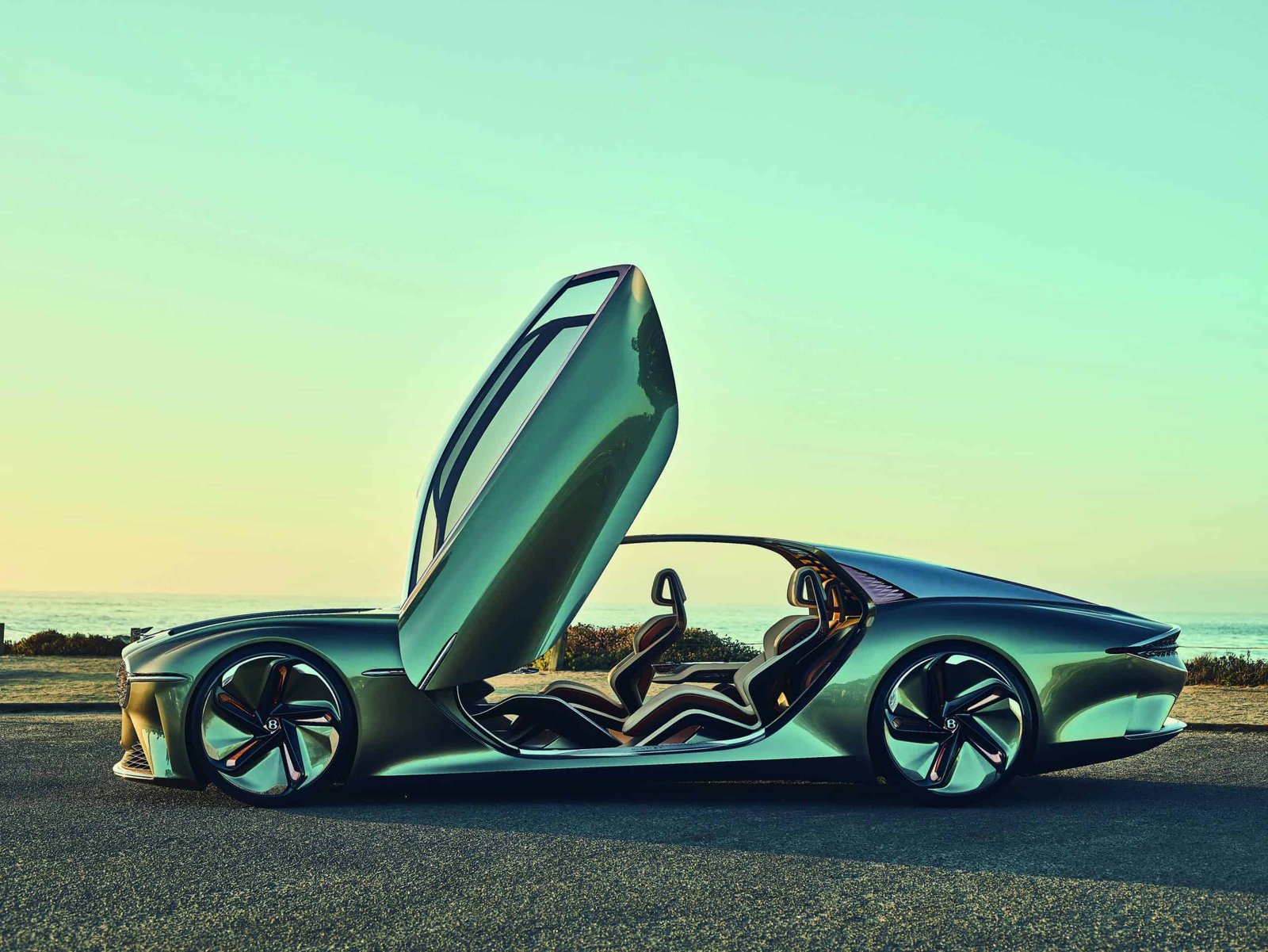
The endless cycle of idea and action,
Endless invention, endless experiment,
Brings knowledge of motion…
From The Rock by TS Eliot, 1934
It’s autumn in New York
It’s good to live it again
From “Autumn in New York” by Vernon Duke, 1934
When, in 1934, TS Eliot’s play The Rock was being performed in London and Vernon Duke was composing “Autumn in New York” in Westport, Connecticut, in the US, Rolls-Royce Ltd was building chassis for the 3½-Litre Bentley in Derby, England. Fast forward to 2019: Eliot’s literary reputation is well established; Duke’s song has long been a jazz standard, recorded over the decades by the likes of Billie Holiday, Frank Sinatra, Bill Evans and Diana Krall; the 3½-Litre survives as a much-coveted classic; and the Bentley marque is celebrating its centennial the world over.
On 19 October of that year, one of those centennial celebrations was held in Brookfield Place in Lower Manhattan – autumn in New York. Fortune was on my side; I was invited to attend and would be able to get up close and personal to, and photograph, the Bentley EXP 100 GT.
The EXP 100 GT is a tad over 19ft in length, a smidgen under 8ft in width and weighs in at 4,189lb. This is not a small car. It is longer and wider than a 2022 Bentley Flying Spur. Four hub electric motors generate 1,400hp, delivering 1,100lb-ft of torque. The unique batteries sustain a 435-mile range and can be charged in 15 minutes to yield an 80 per cent capacity. From a standing start, it can achieve 60mph in 2.5 seconds; Bentley Motors lists a top speed of 186mph.
The body is made of aluminium and carbon fibre. Because the car is electric, the under-bonnet can be used for storage. In the door frame, concealed under a copper plaque, is a document signed by every Bentley employee at the time. If this concept were to become a reality and, say, a dozen examples were produced, the price tag would be around the £1.6 million mark. The grand tourer was introduced to the world at Bentley Motors, Pyms Lane, Crewe on 10 July 2019.
It is twilight and you are whipping around the Alpine curves, Jane or James Bond for a day, in your Bentley GT Speed, accompanied by a John Barry soundtrack, feeling, or at least hoping, that there is little chance of you being passed, being bested. But in your rear-view mirror, you see two bright headlights and the dazzling glow of 6,000 LED lights between them: first this shriek of light, then the car passes noiselessly, and soon the red glow of the car’s tail lights fades and disappears from view.
You had only a fleeting glance, and as the car’s mascot was but an indistinguishable blur, you are unsure of the make or model. An Aston Martin, perhaps? Another Bentley? No one seemed to be driving! This brief glimpse of the EXP 100 GT, however, takes hold in your mind, your imagination, as something special, very special indeed, but something contemporary, nonetheless. Unlike the Rolls-Royce concept, the 2016 103EX – an exercise in outré design – the experimental Bentley is grounded in the idea that grand tourers will not be very different in outward appearance from 2019 to 2035.
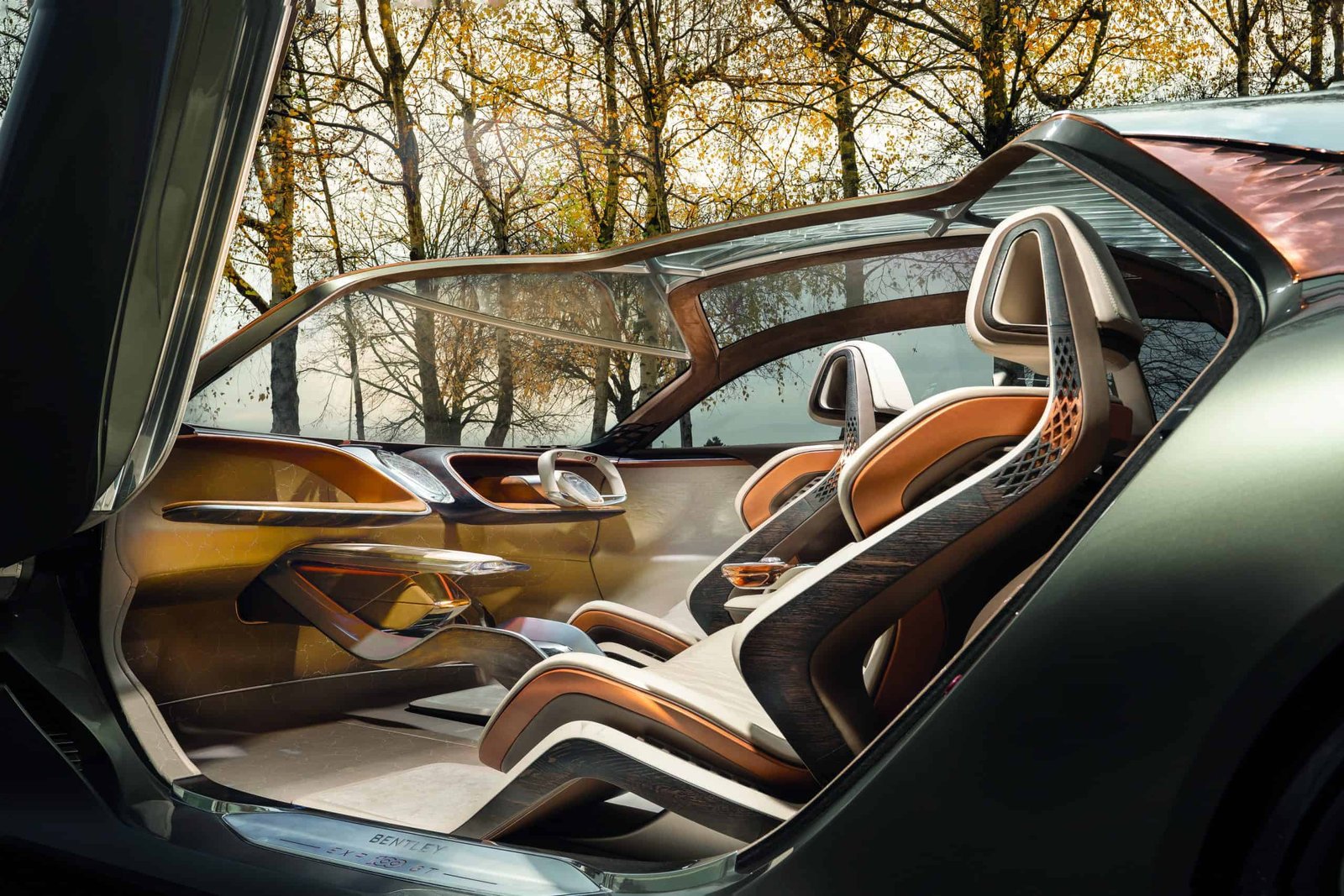
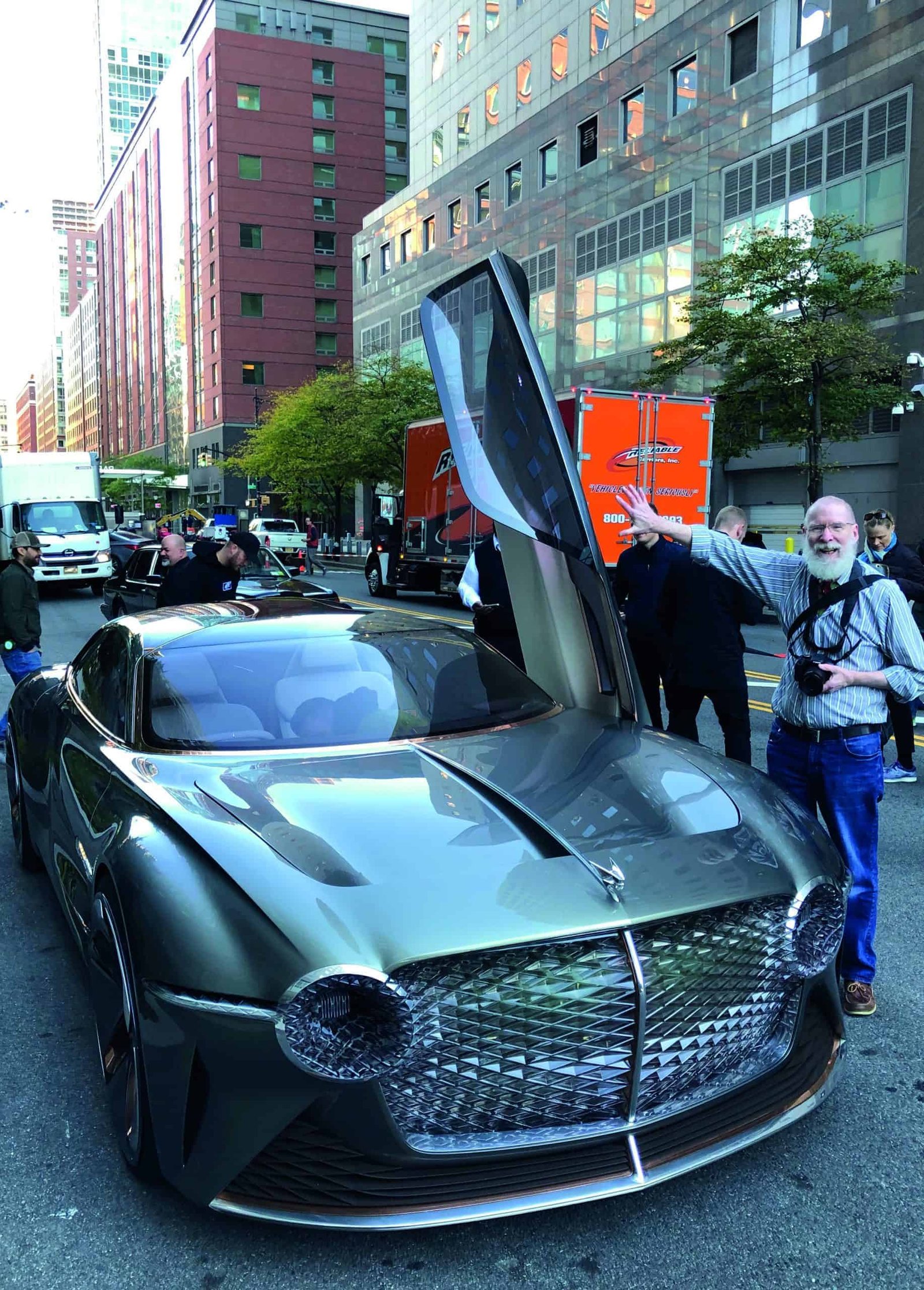
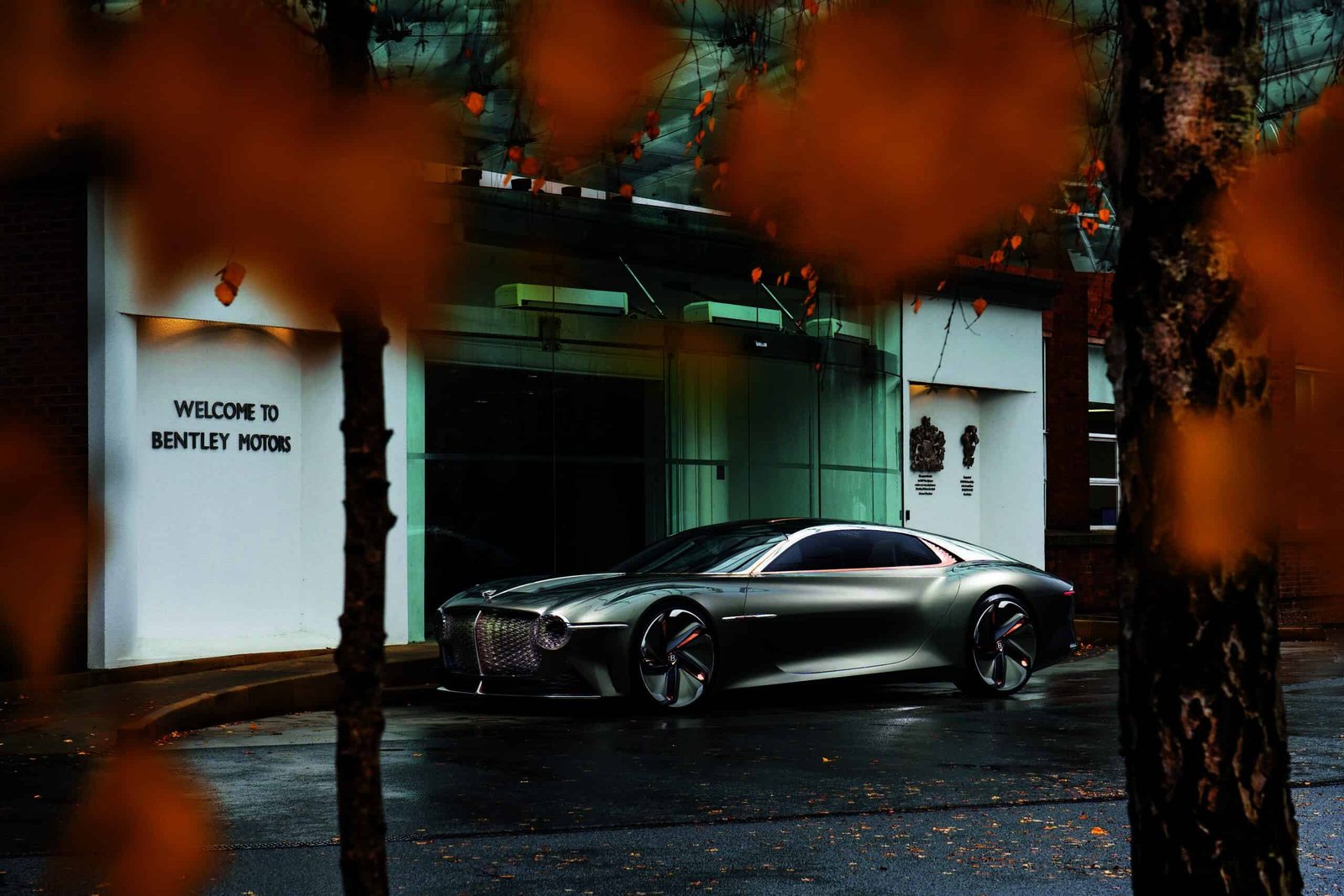
Six-foot-wide scissor doors offer easy ingress and exiting. Inside, the cabin – an incredible admixture of future vision and past tradition – is luxuriously fitted. Fine wood and lush upholstery have been a hallmark of Bentley interiors for decades, but the EXP 100 GT offers a unique twist: wood from trees that have been preserved for millennia, copper-infused, graces the cabin, and the seats are covered in leather-like material that is made, in part, from winemaking by-products. The door panels are covered in cotton damask from Gainsborough, a luxury British fabrics firm that has honed its skills and earned its reputation over the course of more than a century.
In addition, Hand & Lock, which has been producing handmade embroidery in London for over 250 years, has fashioned a raised quilting design for the interior decor, employing a method that dates back to the 14th century. For the seats, Bentley says it worked with the Scottish Leather Group to create soft and tactile aniline hides. “Soluble dyes add colour without producing a uniform surface,” explains the carmaker, “allowing the natural imperfections of the leather to add an extra layer of texture.” This blending of the past and the future works beautifully.
It is quite common today to have small exchanges, throughout the day, with Siri or Alexa: “Siri, what’s the weather this afternoon?”, “Alexa, how’s the stock market doing today?” If, somehow, you found yourself driving the EXP 100 GT, you would be communicating, using your voice or hand gestures, with the Bentley Personal Assistant (BPA) via the car’s crystal centre console. “BPA, darken the glass.” You could also ask BPA to filter surrounding views, provide information about the local fauna, change to the “open car” illusion or switch to autonomous driving.
Much of the EXP 100 GT’s technology is effectively hidden. Conventional controls are not found in the cockpit. As Bentley’s former Design Director Stefan Sielaff said, “The brand thinks gesture control will be able to handle far more complex tasks within the time frame of the EXP.” He goes on to explain that the grand tourer “harvests inputs from the outside environment, such as light, sound, smell and air quality, offering a holistic grand tour”. BPA even gets to know you, pre-empting your wants and needs. Seating, of course, can also be adjusted, but here we have something truly innovative.
In automotive design circles, the term “biometric sensing” has been floating about for some time now. Sensors throughout the cabin monitor, well, almost everything, and the information gleaned is used for the safety and comfort of the occupants. Sensors can observe the driver’s position and gaze, and the position and pressure of the hands on the steering wheel. In autonomous cars, biometric sensing becomes essential. If you are watching television or perusing your office memos while the car is driving itself, you will most definitely rely on biometric sensing for protection in the face of an emergency.
Part of this is encompassed by “biometric seating”. Whether you are driving hands-on or in autonomous mode, the EXP 100 GT’s Adaptable Biometric Seating offers multiple configurations, including layouts for up to four passengers. Biometric sensors monitor cabin temperature, the driver’s blood pressure (although if the car is driving itself, is “driver” an accurate designation?) and the position and posture of the car’s occupants. BPA will do its best, whether through your command or its own intuition, to offer you the most entertaining, comfortable and safe environment possible.
Will it be possible to create a car like this and still maintain a green footprint? Bentley Motors believes so. “Taking our sustainable sourcing to a new level, we worked with bog oak specialists Adamson and Low in Kent to reclaim fossilised oak that had been lying in peat bogs for centuries,” says the company. “To enhance its natural beauty, we filled the open grain, knots and cracks of the wood with recycled copper, in a process inspired by the Japanese art of kintsugi.” Bentley also uses rice-husk ash – a by-product of the rice industry that normally ends up in landfill – in the EXP 100 GT’s exterior paintwork.
It is Bentley’s plan “to develop sustainable practices for every part of the concept car’s production”. To this end, the company has “collaborated with a range of like-minded businesses. From reclaimed riverwood to lighter batteries, the results point the way to a future that reduces our impact on the natural world.” Bentley Chairman and CEO Adrian Hallmark adds that, “Climate change means that governments, companies and individuals must look for a more sustainable solution to move forward”, going on to say that the carmaker can “answer those big questions for the future”.
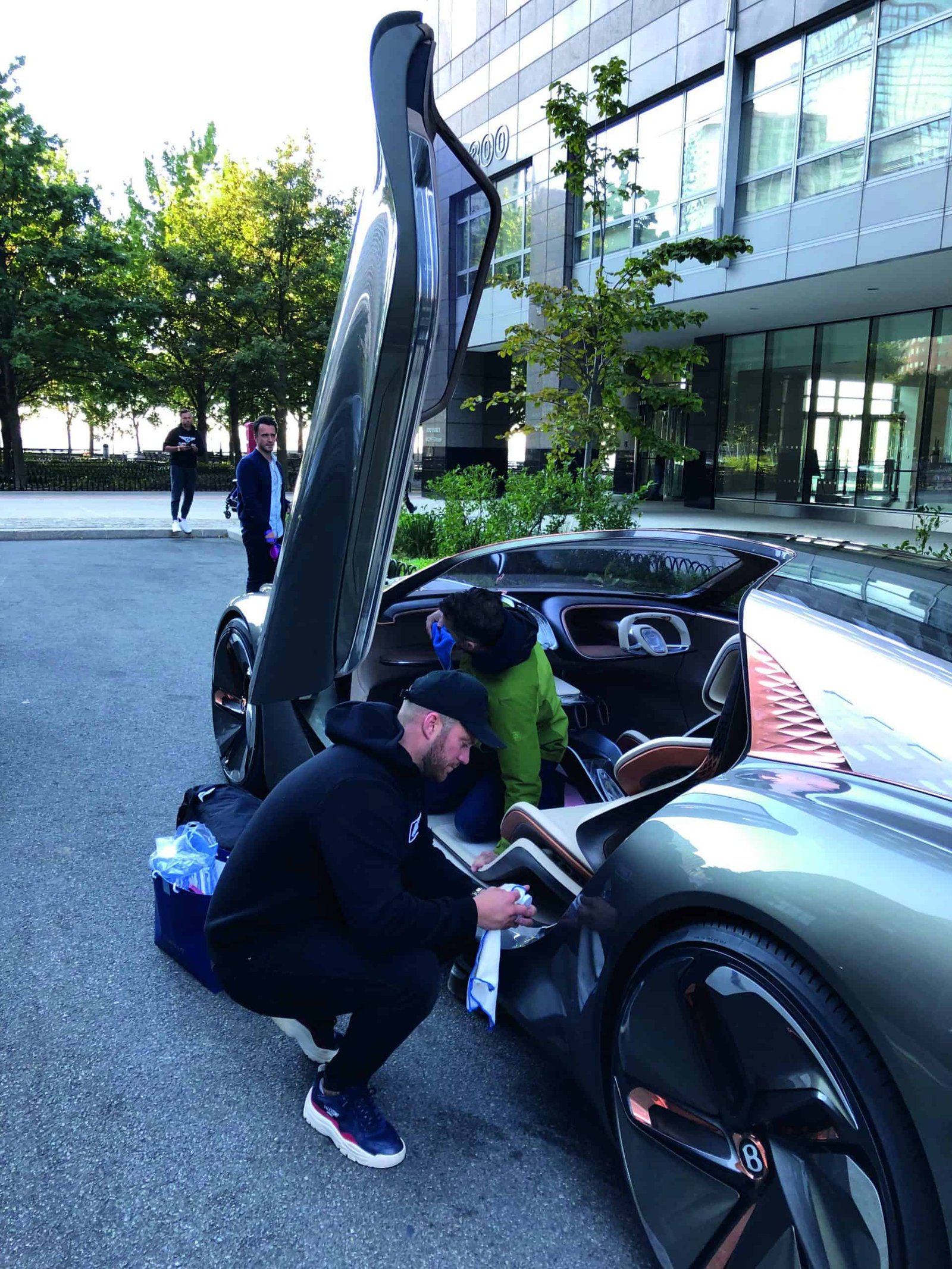
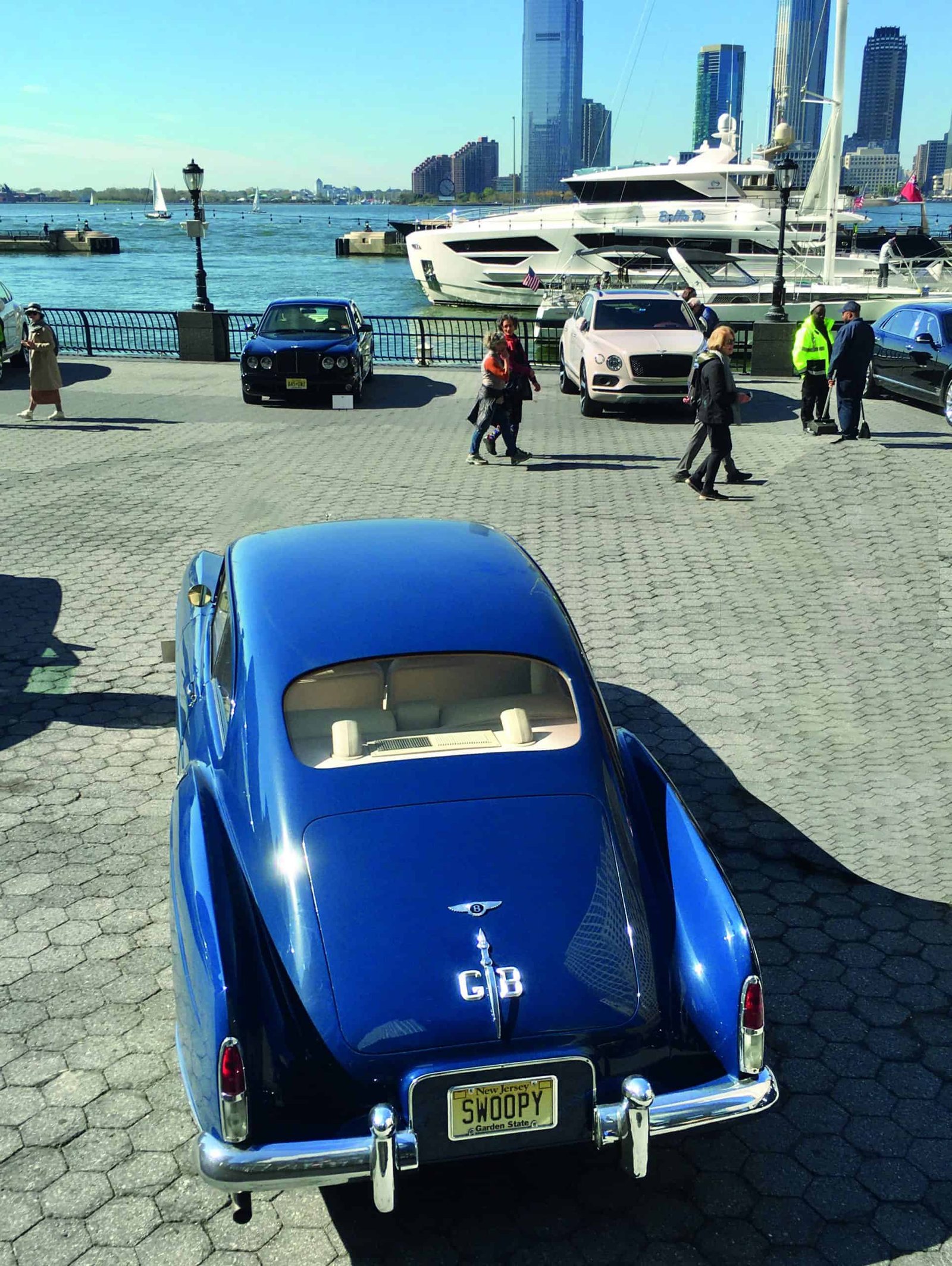
Finding myself in the right place at the right time was sheer luck. To get to Brookfield Place, I rode shotgun from New Jersey in a sleek Bentley S1 Continental fastback (BC23LDJ). My friend Richard Halprin was driving, and as we neared the entrance to Brookfield Place, I sighted a bright orange Reliable lorry. As Reliable is known for transporting high-end cars and this was the day of the Bentley birthday bash, it was hardly difficult to suss that the lorry was probably hauling something exceptional. Richard stopped to let me disembark and drove on to the exhibition site.
Approaching the truck, I found that the driver, Juan Diaz, was receptive to my questions. My hunch proved to be correct and we chatted as we waited for the Bentley representatives to appear. Juan confirmed that he had just driven down from LaGuardia Airport in Queens, and it wasn’t long before two members of the car’s design team – Joe Baker and Alex Towne – joined us.
Eventually the lorry’s rear doors swung open, the cover and the restraints were removed, and the Bentley EXP 100 GT made its New York City debut. The car was driven out of the lorry and parked behind the nearby Pikes Peak Continental GT – all by remote. Baker operated the device, like a kid happily playing with a remote-controlled toy racer. But this car was as genuine as his smile. Before showtime there was some finessing to be done, both inside and out, and the fellows from Bentley fell to it.
Inevitably, a small crowd gathered around, cameras at the ready, and I told anyone who would listen just how exceptional the car they were looking at and photographing was. After a while, Brett Boydell, Bentley’s then Head of Interior Design, arrived. He chatted briefly with me and consulted his colleagues. Despite their affability, the three Bentley boys would not honour my request to take a seat in EXP 100 GT’s cockpit. In life, one can’t realistically hope to have all one’s wishes granted.
Soon enough, it was time for the car to drive itself, sort of, to take pride of place among the array of modern and classic Bentleys on display in Brookfield Place. World-class yachts, moored in the Hudson River, undulated softly under blue skies; the Winter Garden Atrium reflected the autumnal light; and the row of Bentleys, old and new, gleamed in the New York sunshine.
It was, then, a particularly auspicious day for me, as I’m sure most automotive buffs, and certainly all Bentley enthusiasts, could hardly disagree. So, here’s to WO Bentley – raise a glass, shout “Hurrah!” If the EXP 100 GT is anything to go by, his legacy is assured for many, many years to come.
Thanks to all those from Bentley Motors who provided assistance, especially Rita Lawwill, and John Neale for his input. Also thanks to Sabu Advani, former Editor of The Flying Lady magazine, in which part of this article first appeared. And a tip of the hat to the owner of BC23LDJ.

